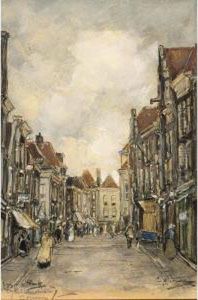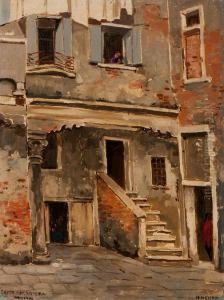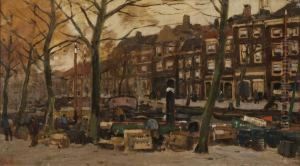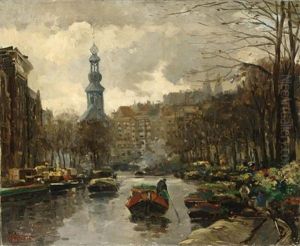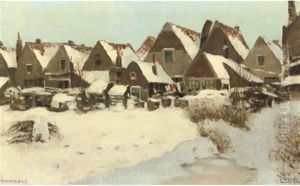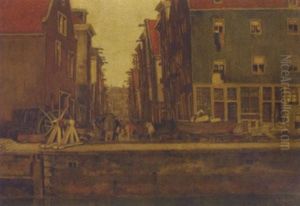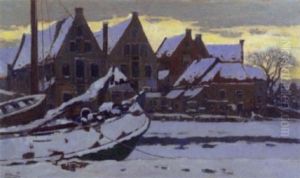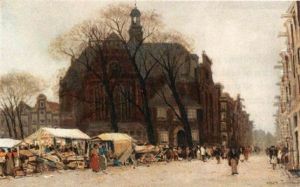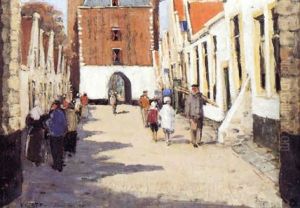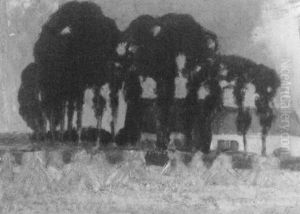Herman Heuff Paintings
Herman Heuff was a notable Dutch painter, born in the year 1833 in Zaltbommel, Netherlands. His life and work spanned the 19th century, a period rich in artistic evolution and innovation in Europe, particularly within the realms of painting. Heuff's career and style were significantly influenced by the broader movements of his time, yet he maintained a distinctive approach that garnered attention and appreciation from both his contemporaries and later generations.
Herman Heuff's artistic journey began at an early age, influenced by the Dutch painting tradition, which is renowned for its meticulous attention to detail, depth of color, and lifelike representation. He was particularly drawn to landscapes and cityscapes, subjects that allowed him to explore and express the beauty of the Dutch countryside and its urban counterparts. His works often depicted serene, idyllic scenes that resonated with the Romantic movement's emphasis on nature and emotion, albeit infused with a realism that was characteristic of the Dutch artistic legacy.
Throughout his career, Heuff exhibited his work in various prestigious venues, contributing to his growing reputation. Despite the acclaim, he remained focused on his craft, continually refining his technique and exploring different aspects of his chosen subjects. His dedication to art was not only evident in his paintings but also in his participation in the artistic community, where he was known for his support of fellow artists and his involvement in artistic societies.
Herman Heuff's contributions to Dutch art were recognized during his lifetime, and his legacy has endured beyond his death in 1901. Today, his works are considered important examples of 19th-century Dutch painting, appreciated for their beauty, technical skill, and the window they offer into the era's aesthetic and cultural values. While not as widely known internationally as some of his contemporaries, Heuff's art continues to be studied and admired by art historians, collectors, and enthusiasts, who find in his paintings a timeless appeal and a testament to the enduring nature of artistic expression.
